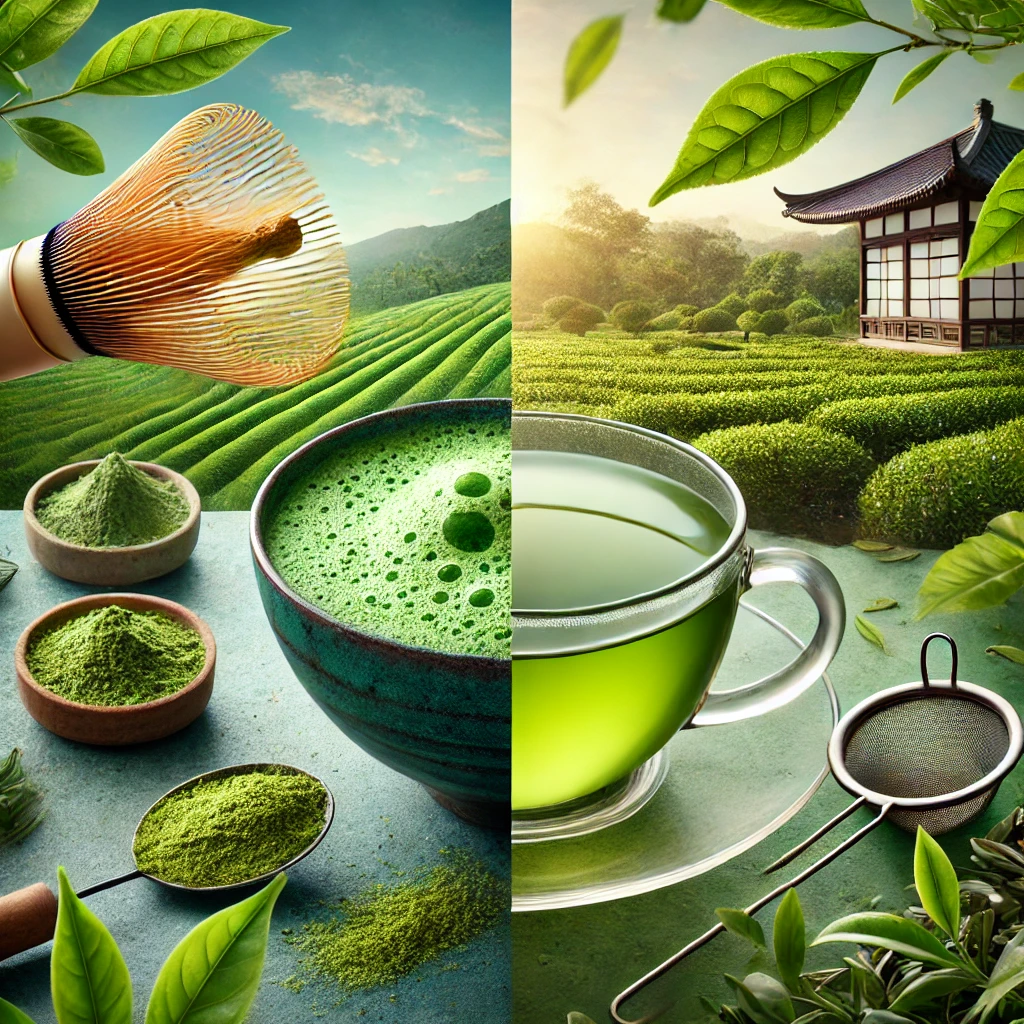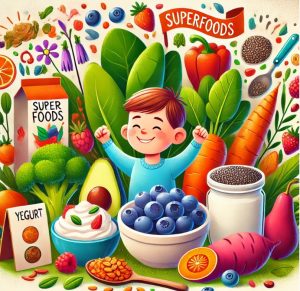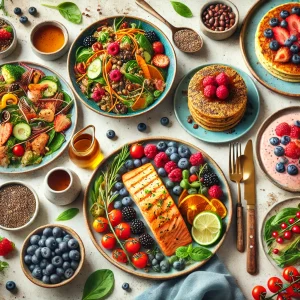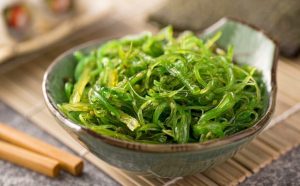Table of Contents
Introduction
Tea, in its many forms, has long been revered for its health benefits and unique flavors. Among the vast varieties, Matcha and Green Tea stand out as two of the most popular options, particularly for their health benefits and cultural significance. Although they come from the same plant, Camellia sinensis, they differ significantly in their cultivation, preparation, and nutrient profiles. Understanding these differences can help you make an informed choice that best suits your taste preferences and health goals. This article delves into the distinctions and benefits of Matcha vs. Green Tea, providing insights into which might be the better option for you.
Thank you for reading this post, don't forget to subscribe!The Cultivation and Production of Matcha and Green Tea
Matcha and Green Tea both originate from the Camellia sinensis plant, yet their cultivation and production processes set them apart.
- Matcha Cultivation and Production
- Shade-Grown Leaves: Matcha leaves are grown in the shade for several weeks before harvest. This process increases the chlorophyll content, giving matcha its vibrant green color.
- Harvesting: Only the finest tea buds are selected for matcha production. After harvesting, the leaves are steamed to prevent oxidation, which preserves the green color and nutritional content.
- Grinding: The leaves are then dried and ground into a fine powder, resulting in the bright green matcha powder used for tea and various culinary applications.
- Green Tea Cultivation and Production
- Sun-Grown Leaves: Green tea leaves are typically grown in the sun, which results in a lighter green color and a different flavor profile.
- Processing: The leaves are harvested, quickly steamed or pan-fried to prevent oxidation, and then dried. Unlike matcha, green tea leaves are left intact and are steeped in hot water to make tea.
These different cultivation and processing methods contribute to the distinct flavor, aroma, and nutritional content of matcha and green tea.
Nutritional Differences and Health Benefits
Matcha and Green Tea both offer a range of health benefits, though their nutrient profiles differ due to their production processes.
- Nutritional Content of Matcha
- Higher Antioxidant Levels: Because matcha is made from whole, ground leaves, it contains more antioxidants than traditional green tea. Epigallocatechin gallate (EGCG), a potent catechin, is abundant in matcha and linked to numerous health benefits, including improved heart health and reduced inflammation.
- Caffeine Content: Matcha contains more caffeine than regular green tea. A typical serving of matcha contains about 35 mg of caffeine, which provides a gentle energy boost without the jitters associated with coffee.
- L-Theanine: This amino acid, present in higher quantities in matcha, promotes relaxation and helps balance the effects of caffeine, leading to improved mental focus and a calming effect.
- Nutritional Content of Green Tea
- Lower Antioxidant and Caffeine Levels: While green tea is also rich in antioxidants, it contains fewer catechins and caffeine than matcha. This makes it a good choice for those sensitive to caffeine.
- Hydration and Calorie-Free: Green tea is an excellent low-calorie, hydrating beverage that provides antioxidants and other beneficial compounds.
Flavor Profiles and Culinary Uses
The flavors of Matcha and Green Tea differ significantly due to their distinct processing methods, which also influence their culinary uses.
- Matcha Flavor and Uses
- Flavor Profile: Matcha has a rich, umami flavor with a creamy texture. The unique taste is a result of its cultivation in the shade, which increases the amino acid content.
- Culinary Uses: Matcha is versatile and used in various applications, including traditional tea ceremonies, lattes, smoothies, and baked goods like matcha-flavored cakes and cookies.
- Green Tea Flavor and Uses
- Flavor Profile: Green tea offers a lighter, more delicate flavor with grassy and floral notes. The taste can vary depending on the type of green tea and its region of origin.
- Culinary Uses: Green tea is primarily consumed as a beverage. However, its infusion can also be used in marinades, soups, and as a base for cocktails.
Cultural Significance
Both Matcha and Green Tea have deep cultural roots, especially in Asia, where they have been consumed for centuries.
- Matcha’s Cultural Heritage
- Japanese Tea Ceremonies: Matcha plays a central role in the Japanese tea ceremony, a cultural practice focused on mindfulness, respect, and the appreciation of simplicity.
- Zen Buddhism: Matcha is historically linked to Zen Buddhism, where monks used it to maintain alertness and clarity during meditation.
- Green Tea’s Cultural Heritage
- Chinese Origins: Green tea has been a staple in Chinese culture for thousands of years, celebrated for its health benefits and role in traditional medicine.
- Global Popularity: Green tea has spread worldwide, becoming a popular beverage choice for those seeking a healthy, refreshing drink.
Choosing Between Matcha and Green Tea
Deciding between Matcha and Green Tea depends on personal preferences and health goals.
- When to Choose Matcha
- Desire for Higher Caffeine and Antioxidants: If you’re looking for a more potent source of caffeine and antioxidants, matcha may be the better choice.
- Versatility in Cooking: Matcha’s unique flavor and powder form make it a versatile ingredient in cooking and baking.
- When to Choose Green Tea
- Preference for a Milder Flavor: If you prefer a lighter taste and lower caffeine content, green tea is ideal.
- Simple Preparation: Green tea is easy to prepare, requiring only hot water and steeping time.
Frequently Asked Questions
1. What is the main difference between matcha and green tea?
The primary difference is in their production and preparation. Matcha is a powdered form of whole tea leaves, offering higher antioxidant and caffeine levels. Green tea consists of whole leaves that are steeped in water.
2. Which is healthier, matcha or green tea?
Both offer health benefits, but matcha contains higher levels of antioxidants and caffeine due to the consumption of the whole leaf. It depends on individual health goals and preferences.
3. Can I drink matcha and green tea every day?
Yes, both can be consumed daily. However, be mindful of the caffeine content, especially in matcha, and consider personal caffeine tolerance and any health conditions.
4. How do I prepare matcha tea?
To prepare matcha, sift 1-2 teaspoons of matcha powder into a bowl, add hot water, and whisk with a bamboo whisk until frothy. Adjust the amount of powder to taste.
5. Are there any side effects of drinking matcha or green tea?
Some may experience side effects due to caffeine, such as jitteriness or insomnia. Matcha can also cause digestive discomfort if consumed in excess. Moderation is key.
Conclusion
In the debate of Matcha vs. Green Tea, the choice comes down to personal preferences and health objectives. Both provide unique flavors and a range of health benefits, making them excellent additions to a balanced diet. Whether you enjoy the rich, umami taste of matcha or the delicate flavors of green tea, incorporating these beverages into your routine can enhance your well-being and offer a taste of cultural heritage. Enjoy exploring the world of tea and finding the option that best suits your lifestyle.





